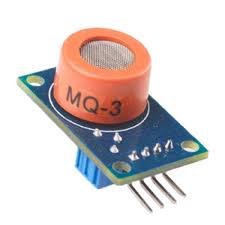Water Level Sensor (Red)
40 in stock
The Water Level Sensor (Red) is a reliable device designed for detecting and measuring liquid levels. Ideal for home automation, agriculture, and industrial applications, it features high sensitivity, durability, and easy integration with microcontrollers like Arduino. Compact and efficient, it ensures precise and long-term monitoring of water levels.
₹45.84 ₹141.60 (Incl. GST)
40 in stock
Water Level Sensor (Red)
A Water Level Sensor is a versatile device designed to detect and measure the level of water or other liquids. The red variant of this sensor is particularly popular due to its reliability and ease of integration into various projects and applications. Here’s a detailed overview of the Water Level Sensor (Red):
Description and Features
The Water Level Sensor (Red) is a compact and efficient module commonly used in both DIY and professional projects. It consists of a series of parallel wires or electrodes which act as probes to detect the water level. The sensor operates by measuring the resistance between these probes, which changes as the water level rises or falls.
Key Features:
- High Sensitivity: The sensor can detect small changes in water levels, making it suitable for precise measurements.
- Easy to Use: It’s designed for simple interfacing with microcontrollers like Arduino, Raspberry Pi, and other development boards.
- Durable Construction: Made with high-quality materials, it’s resistant to corrosion and wear, ensuring long-term use.
- Versatile Application: Suitable for a wide range of applications, from water tanks and aquariums to weather stations and irrigation systems.
- Compact Size: Its small footprint allows it to be easily integrated into various setups without occupying much space.
Technical Specifications
- Operating Voltage: 3.3V to 5V
- Output Type: Analog signal
- Material: High-quality plastic and metal electrodes
- Dimensions: Approximately 62mm x 20mm x 8mm
- Weight: Around 3 grams
Applications
- Home Automation: Used in smart homes to monitor water levels in tanks, alerting homeowners when refilling is necessary.
- Agriculture: Integrated into irrigation systems to ensure optimal watering schedules by monitoring soil moisture levels.
- Weather Monitoring: Employed in rain gauges and other weather monitoring equipment to measure precipitation levels.
- Aquariums: Helps maintain proper water levels in fish tanks, preventing overflow or depletion.
- Industrial Use: Utilized in various industries to monitor liquid levels in storage tanks, ensuring smooth operations.
Integration and Usage
The Water Level Sensor (Red) is straightforward to integrate with popular microcontroller platforms. For example, when using an Arduino, connect the sensor’s VCC to the 5V pin, GND to the ground pin, and the signal output to an analog input pin. By reading the analog value from the sensor, you can determine the water level based on the resistance measured between the probes.
Conclusion
The Water Level Sensor (Red) is an essential tool for anyone looking to monitor and manage liquid levels efficiently. Its high sensitivity, durability, and ease of use make it a valuable component in a wide range of applications, from home automation to industrial monitoring. Whether you’re a hobbyist or a professional, this sensor provides accurate and reliable performance, ensuring your projects run smoothly and effectively.
| Weight | 0.00 kg |
|---|---|
| Dimensions | 0.00 × 0.00 × 0.00 cm |





